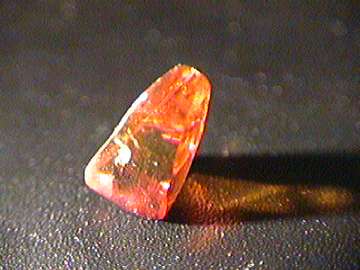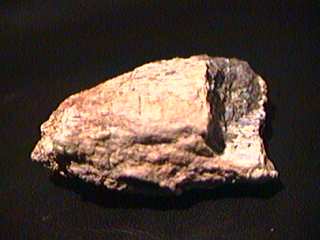pop up description layer
HOME
Cryptozoology UFO Mysteries Aviation Space & Time Dinosaurs Geology Archaeology Exploration 7 Wonders Surprising Science Troubled History Library Laboratory Attic Theater Store Index/Site Map Cyclorama
Search the Site: |
|
How to Make a DinosaurIn the book Jurassic Park (later turned into a movie of the same name) author Michael Crichton describes a formula to bring dinosaurs, extinct for 65 million years, back to life: STEP 1)Find a piece of amber with a blood sucking insect from the dinosaur era trapped in it. STEP 2)Extract the blood that insect sucked from a dinosaur. STEP 3)Use the dinosaur's genetic code (DNA) found in the blood as blueprints for another dinosaur. If pieces of the DNA are missing, fill in the gaps with frog DNA. STEP 4)Use these blue prints to create a dinosaur egg. STEP 5)Hatch the dinosaur in an incubator. STEP 6)Raise the dinosaur to full size. STEP 7)Enjoy! Could we really use this formula to recreate dinosaurs? If we can't today, could we reasonably expect our technology to get good enough that we could do it in the future? Let's look at step one. The idea of getting dinosaur DNA from biting insects trapped in amber originated with George O. Poinar in the 1980's. Amber is fossilized tree sap. Usually it is clear with a yellowish tint. Sometimes insects are trapped in the tree sap before it hardens. Some amber dates from the Mesozoic Era when the dinosaurs lived and it is not impossible insects, carrying dinosaur blood, might be trapped in amber. Step one looks okay if we are willing to spend the time and money to search for the right pieces of amber. Amber is extremely useful for ancient DNA research. In most fossilized bones the actual organic material has been replaced by minerals. Amber preserves the soft tissue of an animal, though, for vast amounts of time. Step two is to remove the dinosaur DNA from the insect. DNA, often called the blueprint of life, is found in many cells in a living body. Police laboratories have actually extracted human DNA from modern mosquitos to use as evidence in criminal cases. So though it might be extremely difficult, it is not impossible, that we might be able to extract some dino DNA from the white blood cells in the blood we recover from an ancient mosquito (It would be a lot easier to do if we could get the DNA from red blood cells as there are many more of those in blood than white blood cells, but unfortunately red blood cells carry no DNA). After that, though, we run into trouble. Scientists have already extracted DNA fragments from an extinct weevil that was trapped in amber some 120 to 135 million years ago. Note that it was only a fragment of DNA of the weevil (less than one millionth of the entire sequence), and not the blood of something it bit. A full set of DNA does carry the blue prints of the creature of which it is a part of. However, this code is made up of billions of individual "base pairs" (like letters in an alphabet) and the order of these are very important to the code. DNA is relatively fragile and breaks down over time. The DNA we are likely to recover from the stomach of an insect will have disintegrated into tiny pieces and most of it will be missing. Unfortunately we cannot just replace the missing section with frog DNA. If we did that we would wind up with frog DNA with a few tiny dinosaur sections rather than dino DNA with a few frog sections. It's going to be difficult for scientists to even be sure they have a fragment of dino DNA and not a part of the insect or contamination from something under the researchers fingernails. Remember nobody has ever seen dinosaur DNA before so we they can only identify it by comparing and contrasting it to DNA from animals alive today. If we were going to fill in missing section of dinosaur DNA it would be more logical to borrow it from birds since they seem to be the closest living creatures to a dinosaur. When we reach Step Three things really get difficult. DNA is often likened to a software program on a computer because it contains instructions on how to build a living creature. (Whereas the instructions in a computer program might tell the machine how to do your taxes.) To do something on a computer, though, you need not only the software, but the hardware (the computer itself) to run it. In the same way, we are missing the "hardware" needed to execute the DNA. This would normally be a mommy dinosaur that produces an egg with the DNA in it. Unfortunately not any old chicken egg will do it. We need a dinosaur egg. Probably one from the same species we are trying to duplicate. Could we alter something like an Ostrich egg for this purpose? Maybe, but today we don't know how to do it, or what kind of changes are needed. Assuming we do find some way past this obstacle, what's next? Hatching the dinosaur in an incubator. This we have plenty of experience with. If the eggs are good we can probably get them to hatch. Now we have to raise our baby dinosaurs to adulthood. Our experience with raising other species will help. California condors in captivity were raised using puppets to play the parts of the parents. This way they did not get too comfortable with human beings and the transition to living on their own in nature was made easier. The logistics of providing an eighty foot long Apatasaurs puppet for this purpose might be difficult, but not insurmountable. Still, we'd have to be concerned about the health of our dinosaur. What do we feed it? Many of the plants it ate back in the Mesozoic will be extinct themselves. What kind of new germs have developed in the past 65 million years to which our dinosaur has no resistance? What kind of medicine can we give our dinosaur if it gets sick? With no past history of dinosaur behavior to work from it will be hard to tell if our dinosaur is acting "normal" or not. Even if we never are able to build a dinosaur from fossilized DNA scientists can still learn a lot about these creatures, and life in general by studying sections of ancient DNA to see how it has changed though the ages. And who knows? If we can get past all these obstacles perhaps we can someday build a dinosaur. Meanwhile, until we do, we'll have to be satisfied with watching them in the movies.
Amber may turn out not to be the only potential source of dinosaur DNA. While most fossilized bones no longer contain any biological material there maybe rare cases where organic material has survived the fossilization process. Scott Woodward, of Brigham Young University, has reported finding DNA in bones recovered from an underground coal mine. Woodward knew that carcasses found in peat bogs were often well preserved for long periods of time. He also knew that ancient bogs became modern coal veins. Getting a hold of some bone fragments found in a coal mine Woodward decided to look for DNA. As Woodward had hoped the bone wasn't completely fossilized and portions were "waxy, like hard soap." Microscopic examination of the bone showed that the cell structures were still preserved, so he began to look for DNA. One gene segment, 174 base pair long, was found. It didn't look like the same gene from any living animal, a strong indication it wasn't the result of laboratory contamination.
Though Woodward cannot say for sure that the bone fragments found in coal were from a particular dinosaur, he does know that whatever animal it was large and lived some 80 million years ago during the Certaceous. A dinosaur seems like a good candidate. If Woodward can show he actually has dinosaur DNA his technique may be extremely useful for learning more about extinct creatures. Unlike with insects in amber, getting DNA right from dinosaur bone would allow a specific DNA sequences to be associated with specific dinosaur species. Paleontologist Jack Horner and graduate student Mary Schwietzer had already been trying to isolateTyrannosaurus Rex DNA from bones even before Woodward started his work.
While getting DNA from dinosaurs is difficult, recovering it from more recently extinct species may be fairly easy. Hendrik Polinar of the University of Munich has managed to identify a Giant Sloth from the DNA in the creature's softball sized droppings. The dung was left in a cave near Las Vegas some 20,000 years ago. As time when on the DNA became "caramelized" as the protein and sugar molecules became intertwinded. This protected the DNA from decay. Polinar was able to later split the bonds and read the genetic sequences. Dispite the preservation much of the DNA material was still lost, though, and it seems unlikely that this process could be used to create a Giant Sloth for a "Jurassic Park."
Copyright Lee Krystek 1996, 1998. All Rights Reserved. |
|
Related Links |
|
|





